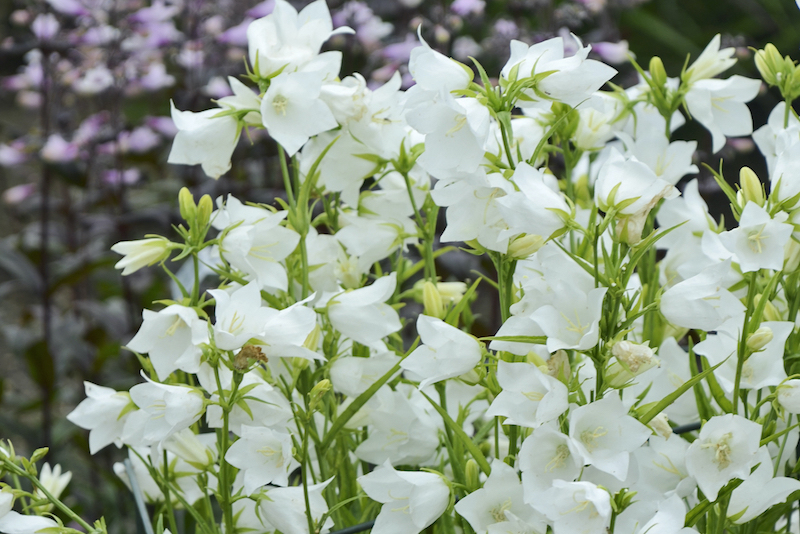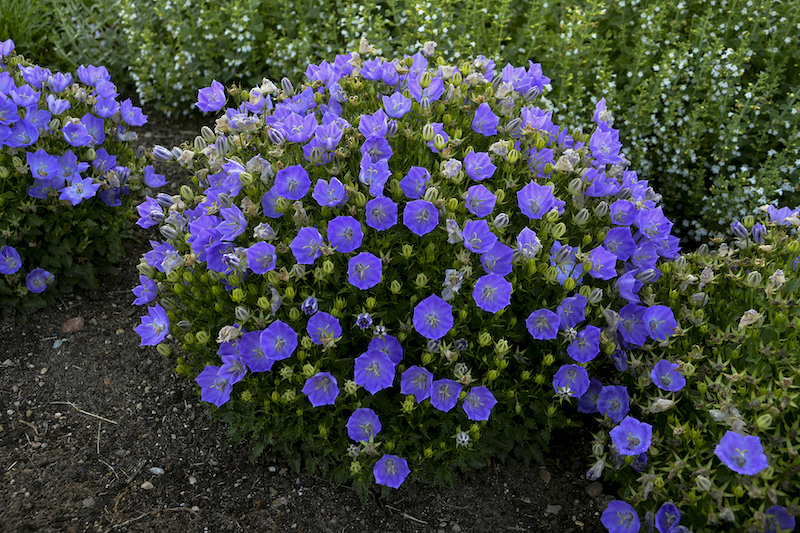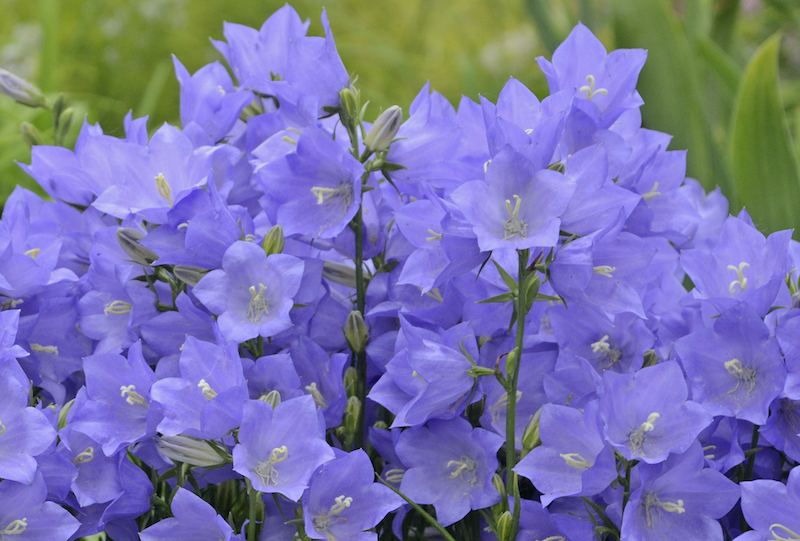Growing Bellflower
Bellflower, also known as Campanula, are colorful herbaceous perennials known for their charming, bell-shaped flowers. There are hundreds of varieties, colors, and growth habits in the species. Some are low-growing groundcovers with a terrific blend of attractive foliage with masses of flowers, other varieties are compact with an upright growth habit. These showy plants make an excellent choice for cottage-style gardens, border edging, and rock gardens; in fact there is a variety to suit any garden application. They produce an abundance of flowers while being low maintenance. These hardy beauties that can tolerate extreme weather conditions, growing in hardiness zones 3-9.

Planting Bellflower
Find a sunny location in your garden, where Bellflowers get at least 6-8 hours of direct sunlight daily, which will boost flower production. Bellflowers prefer well-draining soil, rich in organic matter such as garden compost or well-rotted manure. Bellflower is a durable perennial and can tolerate a wide variety of soil conditions, including occasional drought once established.

Watering Bellflower
Bellflowers appreciate consistent moisture, particularly when planted in their first year. Check the first few inches of soil with your finger. If the soil is dry, it's time to water. Water deeply and thoroughly, making sure water hits the root system and avoiding the foliage. Bellflowers become more drought tolerant as they mature.
Fertilizing Bellflower
Planting Bellflowers in nutrient-rich soil will provide the plant with a slow and steady source of nutrients. During the growing season, apply a balanced, water-soluble, organic fertilizer with an NPK ratio of 10-10-10 once or twice a month, following package instructions. Always water the soil thoroughly before applying fertilizer to avoid root burn.
Pruning Bellflower
Deadheading Bellflower is recommended to promote further seasonal blooming for a longer-lasting display. Simply remove spent flowers by snipping them off at the base of the stem. Some varieties of Bellflower can reseed quite easily, so if you do not wish for this plant to naturally spread, remove seed heads in the fall. Trim the spent foliage in early spring to right above soil level; this will help clean up the plant and prepare it for new growth.

Caring For Bellflower in Pots
Bellflowers can be grown in pots easily; simply plant them in well-draining soil that is amended with organic compost. Bellflowers are not picky about soil pH and soil texture. These perennials love the sun, so place the container in a sunny location for the best flower production. Be sure the container has ample drainage holes to avoid soggy soil. Bellflowers can be sensitive to extreme frost, so provide frost protection by wrapping the pot with bubble wrap or burlap to protect it from major freeze-thaw cycles, or move the pot to a protected area during the coldest months.
Winter Care for Bellflower
Just before the first frost in early winter, apply a light layer of organic mulch around the base of the plant and the root system to help protect it from extreme winter weather. All foliage can be trimmed back near soil level in late winter / early spring.
 |
Author Chris Link - Published 03-10-2023 |
